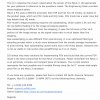Guys, as previously stated, Sony Exmor CAN bin on the sensor. It is available on many of their sensors and saves readout time or enables higher frame count by the cost of resolution.
...but that‘s really not the point here.
So you are saying that Sony EXMOR has programmable logic onboard? We do know for a fact that EXMOR does A/D column conversion right at the end of each row/column. You are saying it's also doing raw collection "processing" before it dumps that data to the image processor? It would have to process multiple rows and columns, calculate that and then dump it out.;...and I guess an image processor would be non the wiser?
Hmmm,....I dunno,...this doesnt look like something "Sony" did at the sensor collection level. It's looks more like a third party binning or line skipping deBayer.
It's very hard to say for sure.
The bigger question for DJI is; "....WHY?....."
CT










